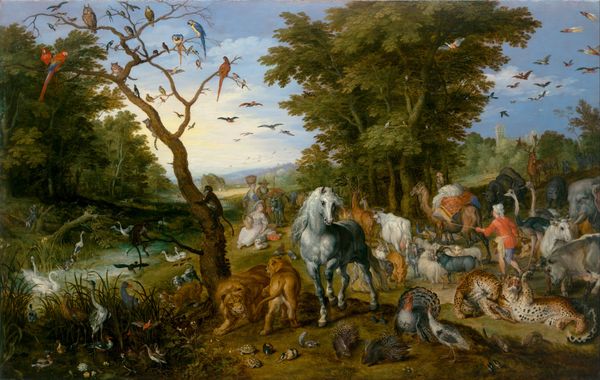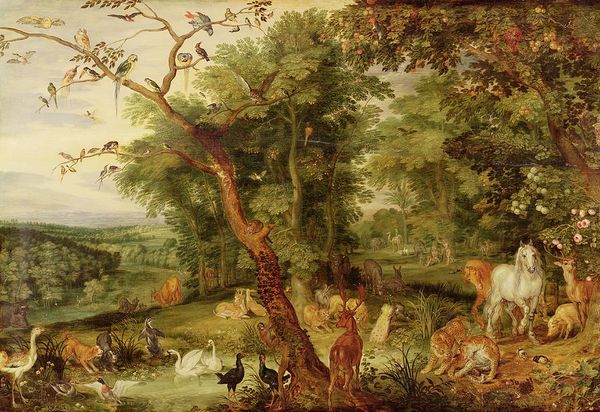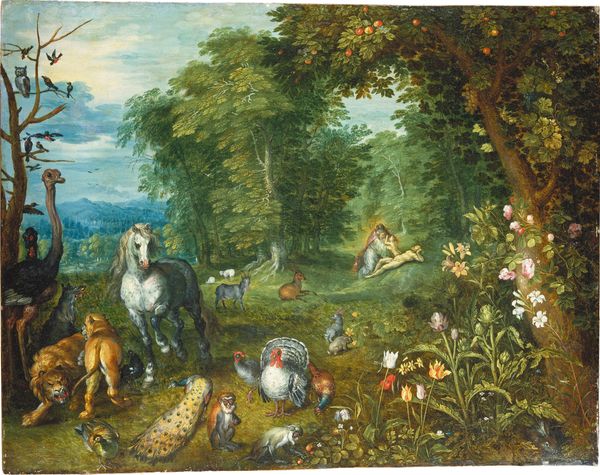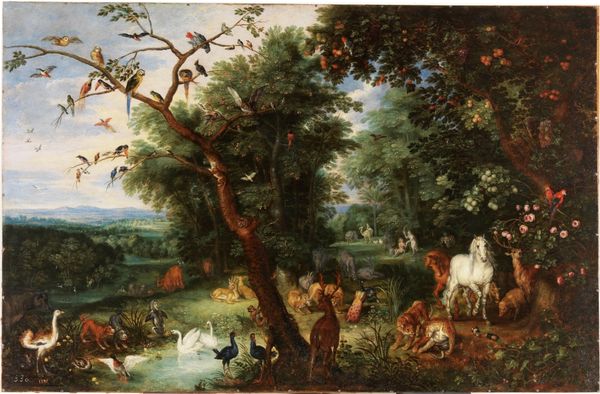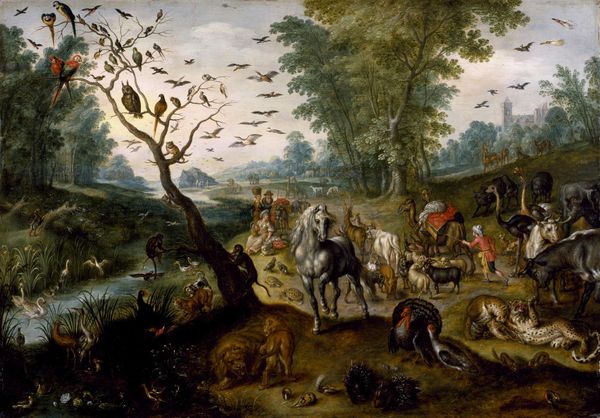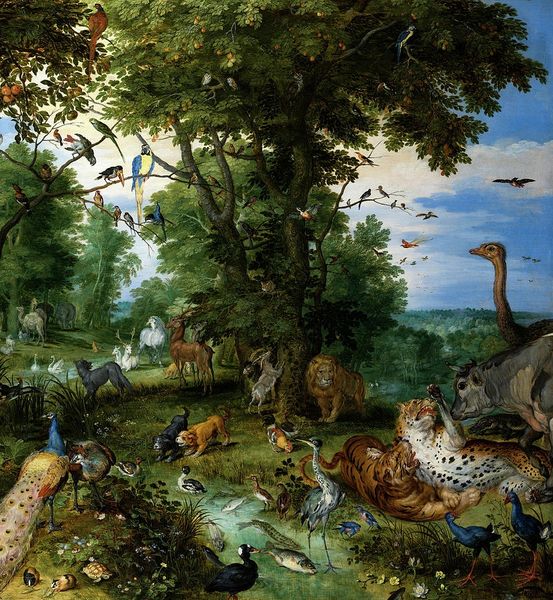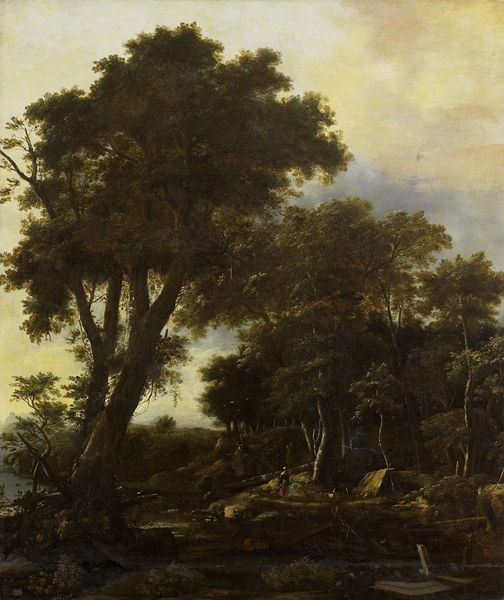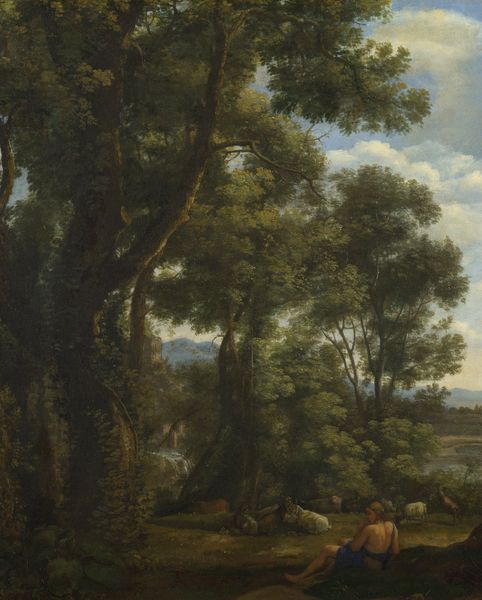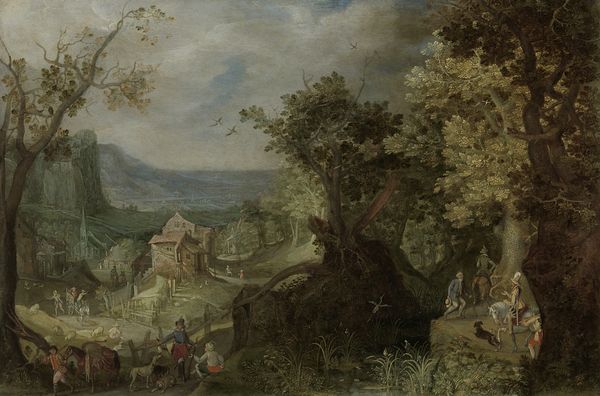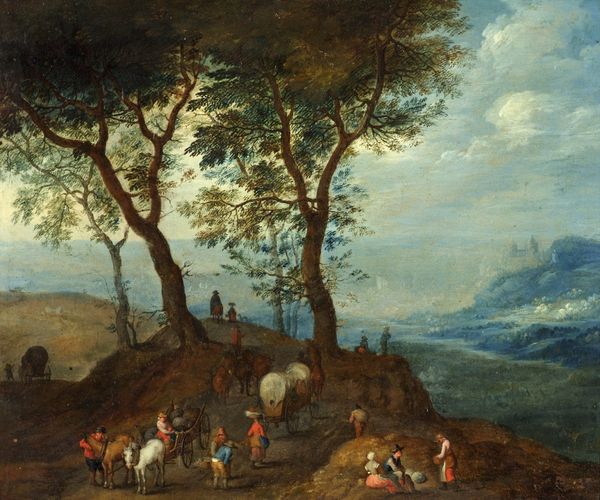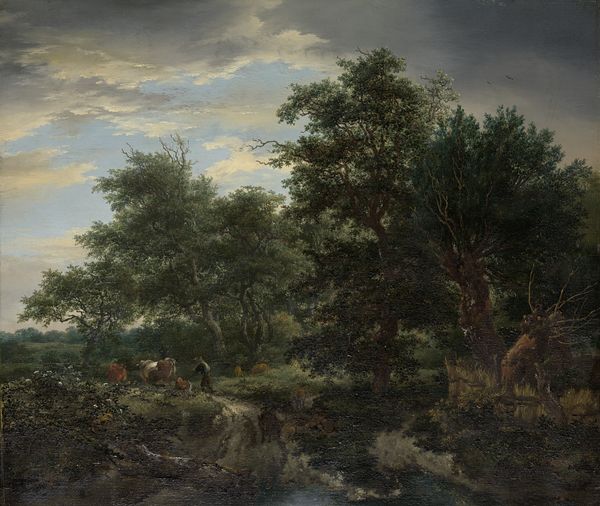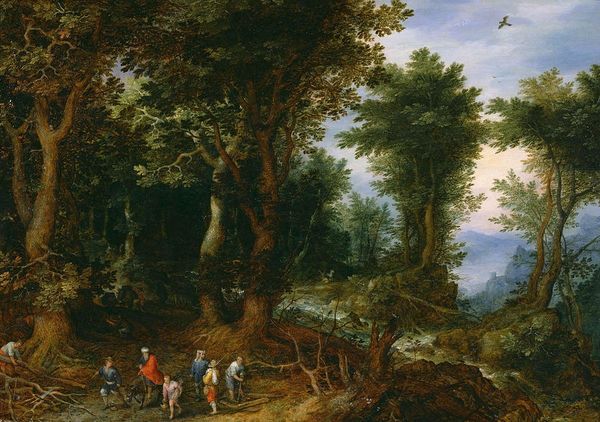
The Garden of Eden with the Fall of Man 1609
0:00
0:00
janbruegheltheelder
Galleria Doria Pamphilj, Rome, Italy
panel, oil-paint
#
panel
#
allegory
#
baroque
#
oil-paint
#
landscape
#
figuration
#
oil painting
#
history-painting
#
northern-renaissance
#
realism
Copyright: Public domain
Curator: Take a look at Jan Brueghel the Elder's "The Garden of Eden with the Fall of Man," painted around 1609. It's oil on panel, currently housed here at the Galleria Doria Pamphilj. Editor: Oh, my goodness, what a vibrant, overwhelming jungle of creatures! It's so dense and lush, like stepping into a dream – a slightly unsettling dream, perhaps? Curator: The piece is remarkable for its detailed rendering of flora and fauna. Brueghel, along with collaborators, was known for such exquisite, almost scientific, depictions. This level of detail points to an investment in representing the natural world, influenced by the expanding scientific observation of the time. Consider the labor invested in reproducing that peacock’s plumage! Editor: Yes! That peacock is completely arresting. I am totally hypnotized by the details. It is so full, almost bursting with life... yet it also hints at something being off-kilter, with the fall looming so delicately in the background. It almost feels like looking at perfection, knowing it cannot possibly last. I find that incredibly melancholic, in a funny way. Curator: Exactly! And to take your reading further, note that paintings of Eden became fashionable goods for wealthy urban buyers during this period. It's important to see these depictions within the context of trade and privilege – they display wealth but are also products manufactured through the workshops of skilled artisans. There's a material and economic reality embedded in the idealized paradise. Editor: That tension really sings, doesn't it? It’s all incredibly wrought. And seeing it like this does add weight, especially as we know now about all the production, travel and the work itself. Curator: So while on the one hand, it can function as a simple religious allegory about original sin, on the other, it reveals fascinating connections between art production, global trade in exotic species, and shifting ideas about nature. Editor: Well, I walked in thinking "charming overload," but now I see a carefully constructed argument playing out. The details become whispers about privilege, and the coming doom feels even sadder as a result.
Comments
No comments
Be the first to comment and join the conversation on the ultimate creative platform.
